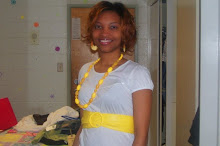Conley Chapter 3 Response
With the increased state and national accountability methods or tactics being monitored in today’s schools, educators everywhere are feeling the pressure of making sure that every student learns. “No Child Left Behind mandates that teachers use proven effective teaching and learning practices, that are supported by scientifically based research.” Although, this is the goal of every teacher in America it is important to remember that there are many obstacles that may prevent such practices from being implemented within the classroom. It is up to the teacher to decide on how to deliver content to every student. Sometimes teachers do not make the best decisions on how to teach their students and those students often fall between the gaps and get left behind due to a lack of real authentic instruction. But still the final question to be asked and answered is how will instruction be delivered to the students.
Chapter 3 emphasizes Standards -based Big Ideas, and calls a need for teachers to develop them. One of the big debates discussed was textbook vs. standards-based. Though it is not recommended that teachers teach strictly with textbooks this is exactly what happens each and everyday in classrooms everywhere. Should teachers use textbooks as a resource tool or as a way to deliver content to students, yes. But, learning expectations must be set and assessments should be developed to measure those expectations. “Teachers who focus of textbooks while ignoring state standards and assessments gamble with their students’ performance in ways that matter for state funding for schools, students’ academic progress, and even graduation.” This is very true and teachers must keep in mind that each student learns differently and textbooks do not include accommodations for students. Textbooks alone often do not include enough information to help students prepare for required tests.
Standards-Based Big Ideas call for teachers to research standards and base instruction according to those standards. Teachers move away from the text and learn to provide authentic instruction to students that will help them to grasp content more effectively. Backwards mapping seems to be a great process that helps teachers to help prepare students for testing and to help provide them with the required content knowledge. As I said before, recently teachers have been pressured to use scientifically based research when teaching students. This idea is often easier said than done. The principles and practices listed on page 75-76 help to complement the principles of differentiated instruction while keeping the student’s interests and needs in mind. The key to accomplish success for all learners within the classroom is to find the perfect balance between text and content standards. Each teacher should also teach with student variance in mind and ensure that each student develops an understanding of the content delivered to them.
Sunday, January 25, 2009
Subscribe to:
Post Comments (Atom)

No comments:
Post a Comment